I wouldn’t say that I’m obsessed with death, but I do admit that wherever I travel, I do seek out cemeteries and celebrations that honor the dead. I just like how different cultures treat death. They talk about it. They plan for it. And they teach their children how they want to be honored.
All Souls’ Day, which is celebrated around the world, provides just the occasion for these familial activities. My first exposure to this holiday was in Ecuador, where I got my first taste of how Latin Cultures engage with their ancestors on the day they return to Earth. If you’d like to read more about my experience in Ecuador, here is my post from 2018: Diá de Los Difuntos.
Since then, I’ve spent All Souls’ Day in other countries. But in most cases, activities were private and shared only among family. I wasn’t invited. And so, for these reasons, I was intrigued by the very festive and public ways that México celebrates their traditional Diá de Los Muertos or Day of the Dead. This year, I thought I’d see what the fuss was all about.
First Stop, the Colonial Pueblos of Guanajuato, Querétaro and San Miguel de Allende, México
Just north of México City, México, lies an enclave of small cities known for their architecture, history, and cultural importance. Over the course of 10 days, I visited three of them to understand what makes them so special. It didn’t take me long to find out.
Guanajuato, Querétaro and San Miguel de Allende are known across México for their well-preserved Colonial and Baroque Architecture and have all been designated as UNESCO World Heritage Sites (inscribed in 1988, 1996 and 2008 respectively). Personally, I can’t ever get enough of it: wandering the winding alleys and arcades, popping into the cool air of the stone churches, people watching in the shady plazas, and finding just the right picture of an interesting doorways dripping with bougainvillea in the angled light of the afternoon. It’s a good life. No wonder it’s a popular place for tourists!
















This year, like thousands of others, I descended upon these cities for the holiday weekend of Diá de Los Muertos, or Day of the Dead. This part of the country is known for its grandiose celebrations. While many other parts of the world celebrate All Souls’ Day on November 1st, México’s Dia de Los Muertos is celebrated across two days, November 1st and 2nd- giving the community more time to prepare, decorate and celebrate this very festive occasion.
During Diá de Los Muertos, just as on All Souls’ Day, it is believed that the deceased have the ability to cross through a portal and visit their living relatives. In México, if you’ve ever seen the Pixar animated movie, Coco, then you will know that the ancestor is allowed to return to this plane only if the living relative makes a point to remember them. The act of remembering is very important in México and the more public and grandiose the remembrance, the better for all. During my days in these communities, I learned about all the ways that Mexicans facilitate this return passage for their ancestors.
Papel-Picado (Cut Paper)
In the days leading up to the celebrations, I watched many locals decorating their streets, churches, plazas and the front of their houses, stores, and businesses. I started to notice the same symbols scattered throughout. The most noticable was the papel-picado (cut paper) gracing streets and lobbies.







With a little research, I learned that the papel-picado represented the wind, inviting the souls back to the land of the living. All throughout town, their flapping could be heard in the lovely breeze.
Cempasúchilles (Marigold Flowers)
Another ubiquitous symbol of Diá de Los Muertos is the cempasúchill or marigold flowers. It is believed that their intense smell and color can guide the spirits back from the afterlife. Whole flowers were strung up and hung from trees, bunches of flowers created colorful murals, and torn flower petals were strewn along pathways for the spirits to follow home. It was so vibrant!
In addition to decorations, marigolds also figured prominently into seasonal menu choices. I saw ice-cream, cocktails and syrups all made from the cempasúchill.





Tapetes de Aserrín (Sawdust Carpets)
In the hours leading up to Diá de Los Muertos, I witnessed many people designing artwork directly in the street. They used completely natural products such as dyed wood shavings, salt, black, red and white beans, lentils, corn and flower petals. I learned they were making tapetes de aserrín (sawdust carpets). This type of artwork is ephemeral, meaning it is meant to be temporary. For two nights only, it guides the deceased throughout the community. By the morning of November 3rd, the streets and walkways were all swept clean.





Mariposas (Monarch Butterflies)
In the spring, Monarch Butterflies migrate north from México throughout North America. In the fall, their annual return to México coincides with Diá de Los Muertos. This connection gave rise to the ancient Indigenous beliefs that the butterflies represent the souls of the deceased returning to the living world. The cycle of butterfly migrations symbolize the ongoing cycle of life, in whichever world you are living. In the historic cities, the symbol of the butterfly flitted all around.
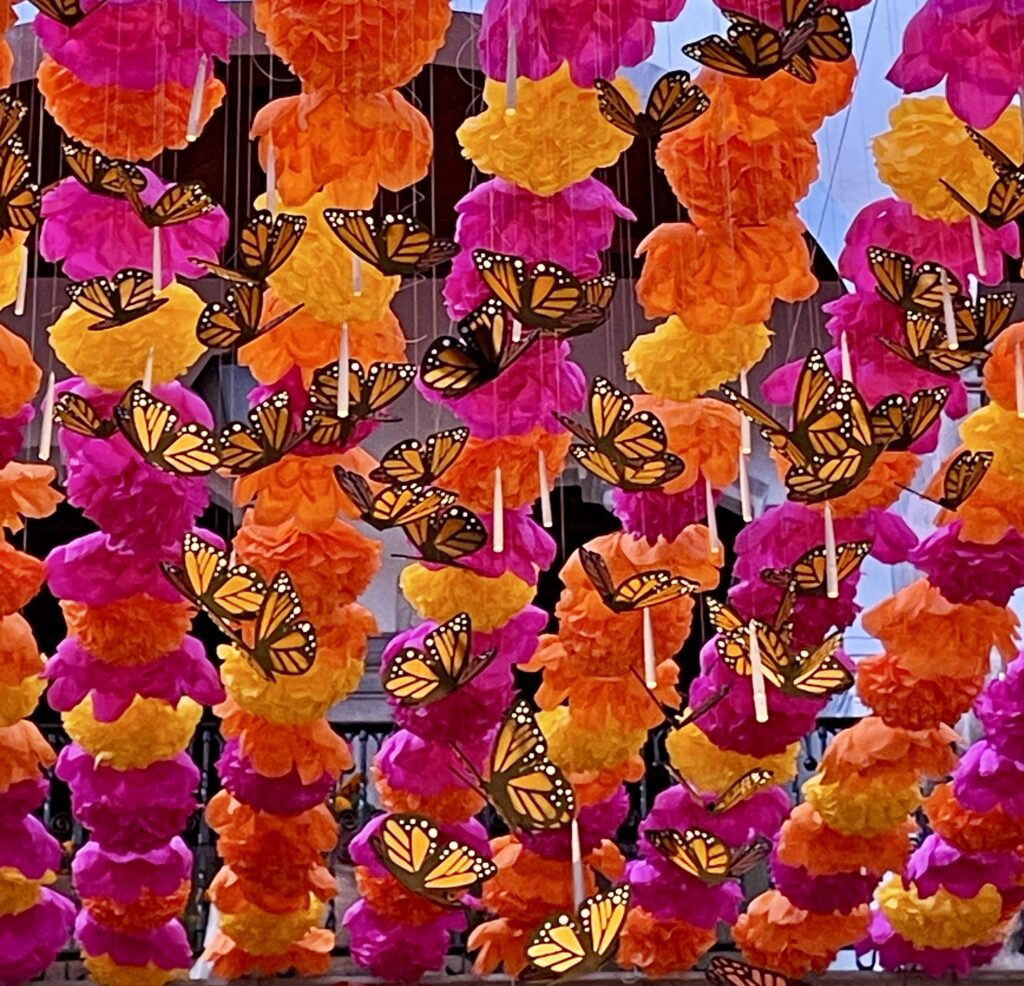
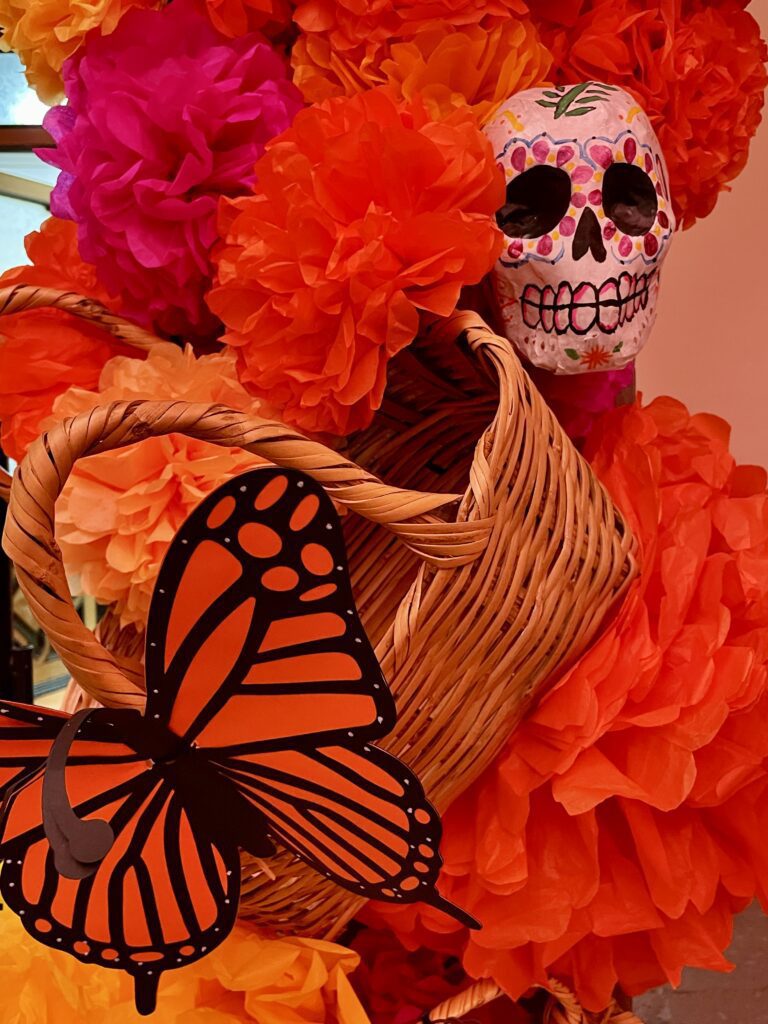
Calaveras (Skulls) and Calacas (Skeletons)
There’s nothing morbid about the skulls and skeletons of Diá de Los Muertos, for they add the humor to the holiday. They’re happy to be among the living, visiting their ancestors – and decorating the streets- again. Just like in the movie Coco, these Calacas look good, because the place you go after living seems like a pretty fun place to be!









Las Catrinas (Well-Dressed Skeletons)
Like the Calaveras and Calacas, Las Catrinas added style- and an important history- to the celebrations.
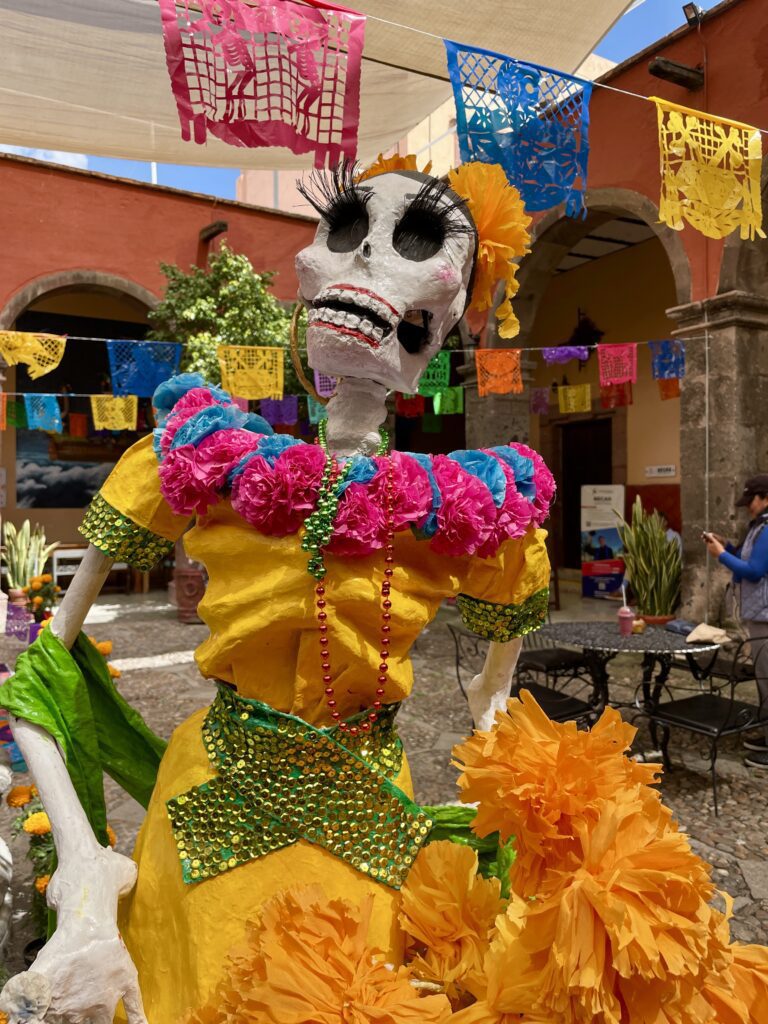
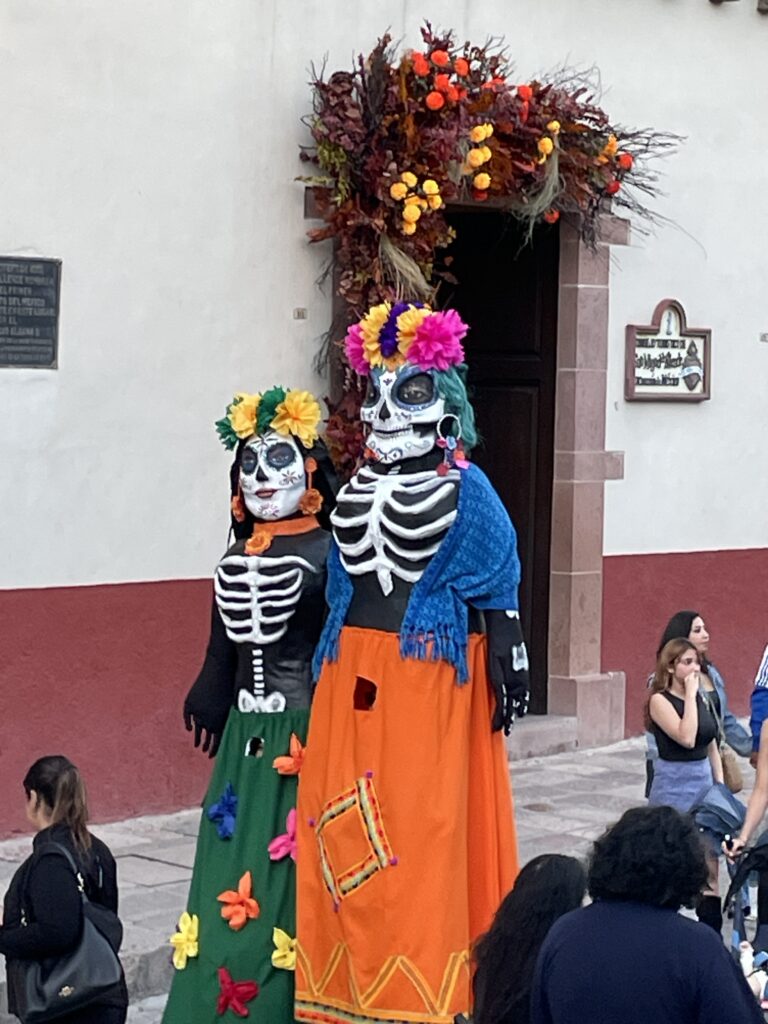
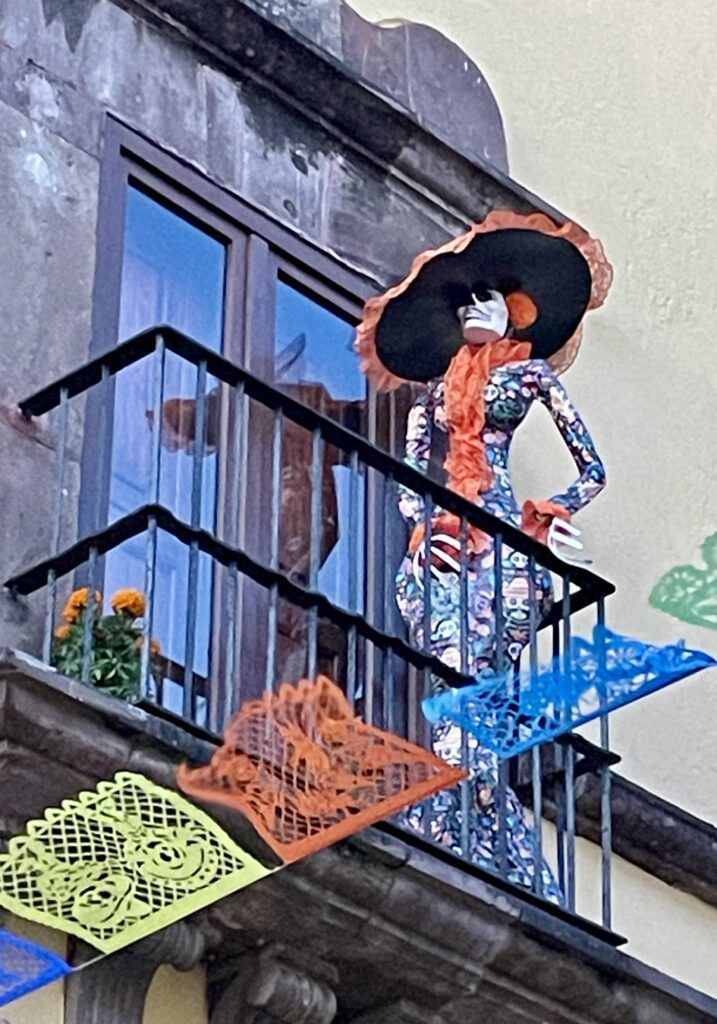
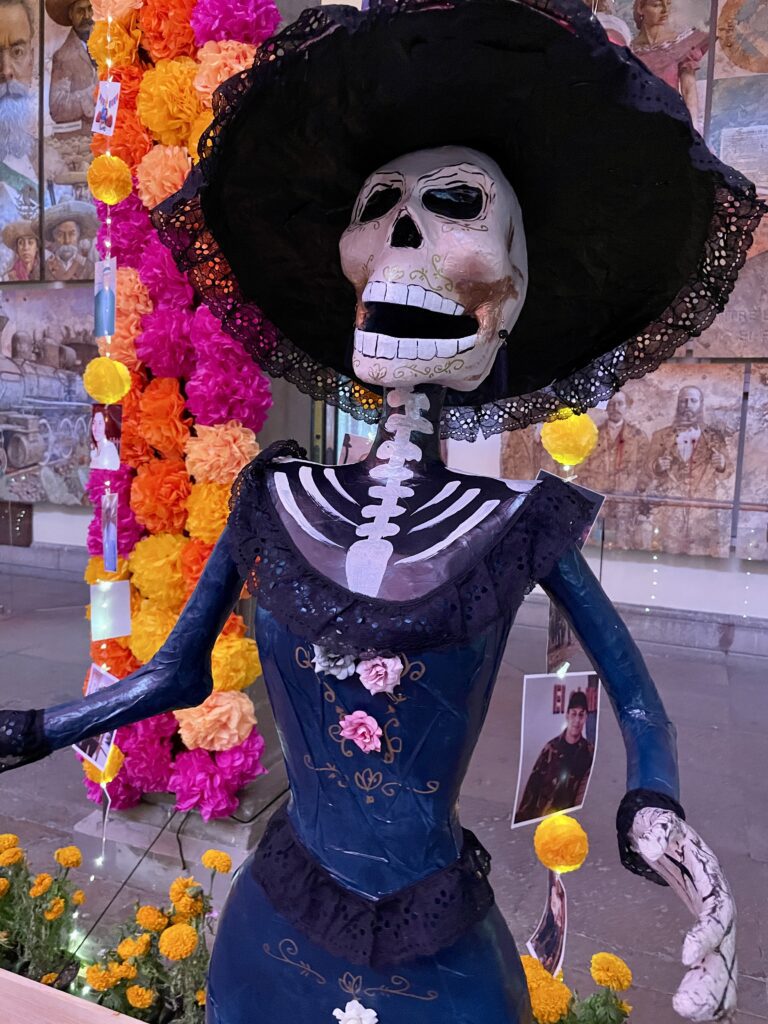
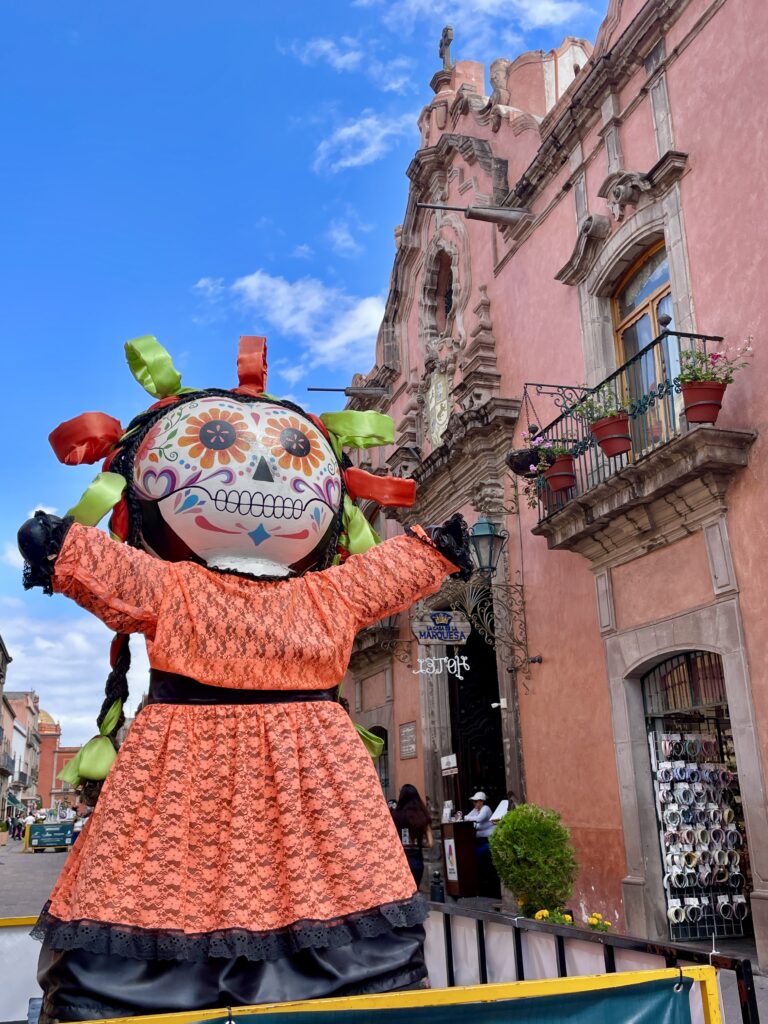
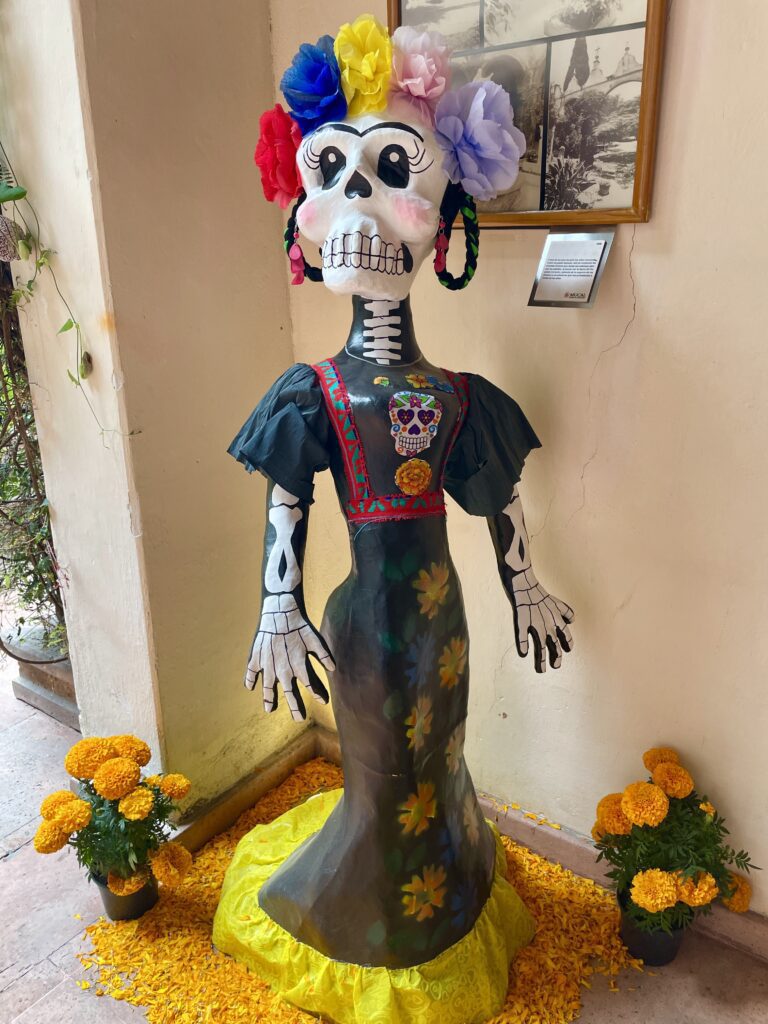
The history of the Catrinas are steeped in social activism, rather than tradition. At the beginning of the 19th century, a cartoonist named José Guadalupe Posada first drew La Catrina as a way of protesting the desire of Mexican’s to look more European. His efforts ignited a movement for Mexicans to take pride in their traditional clothing, and the desire to “become a Catrina” has developed into one of the biggest symbols of today’s Day of the Dead celebrations. Face painting booths, artistic head pieces and stylish dress shops popped up everywhere in the streets to transform the public into all manners of a Catrina. Both women and men wore the face and clothing proudly.
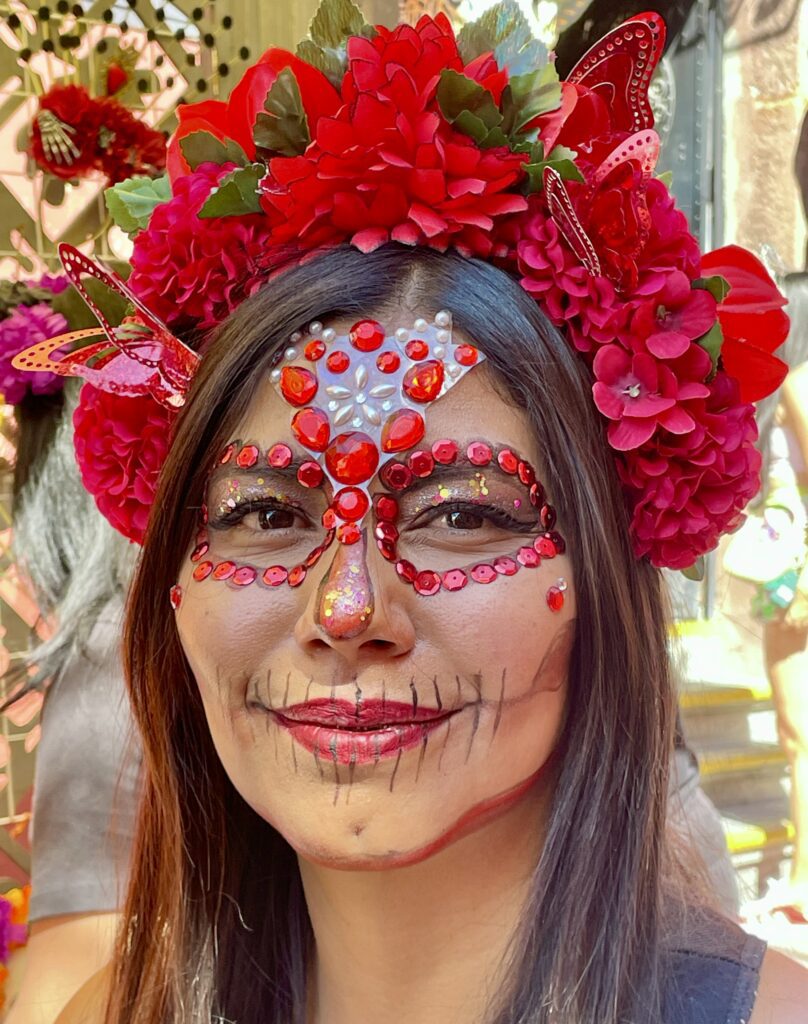
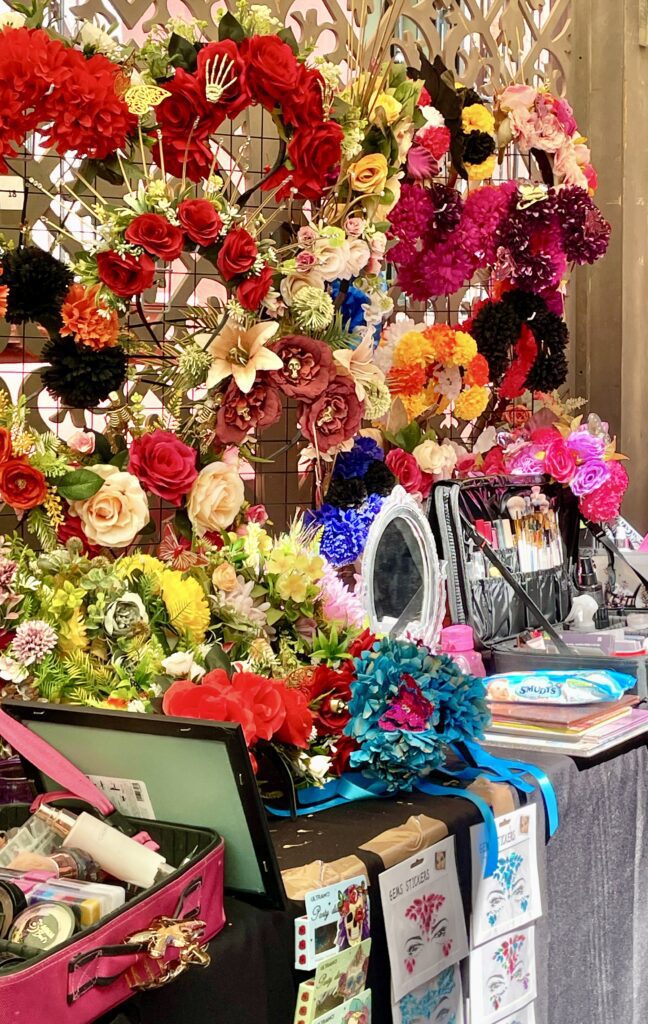
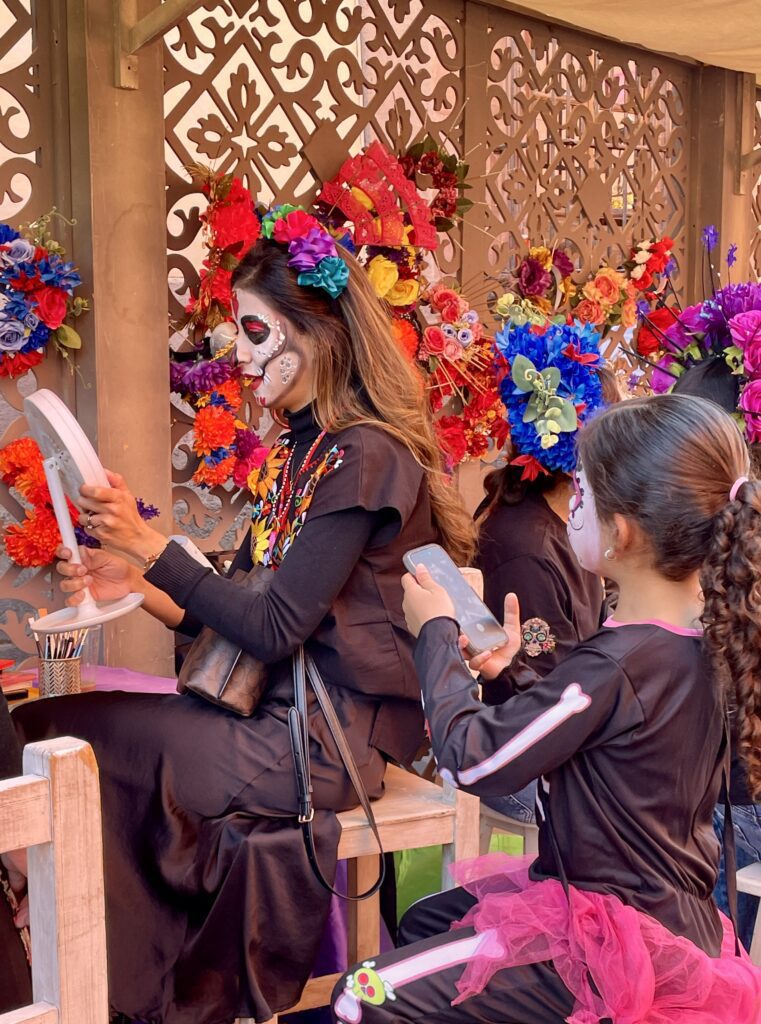

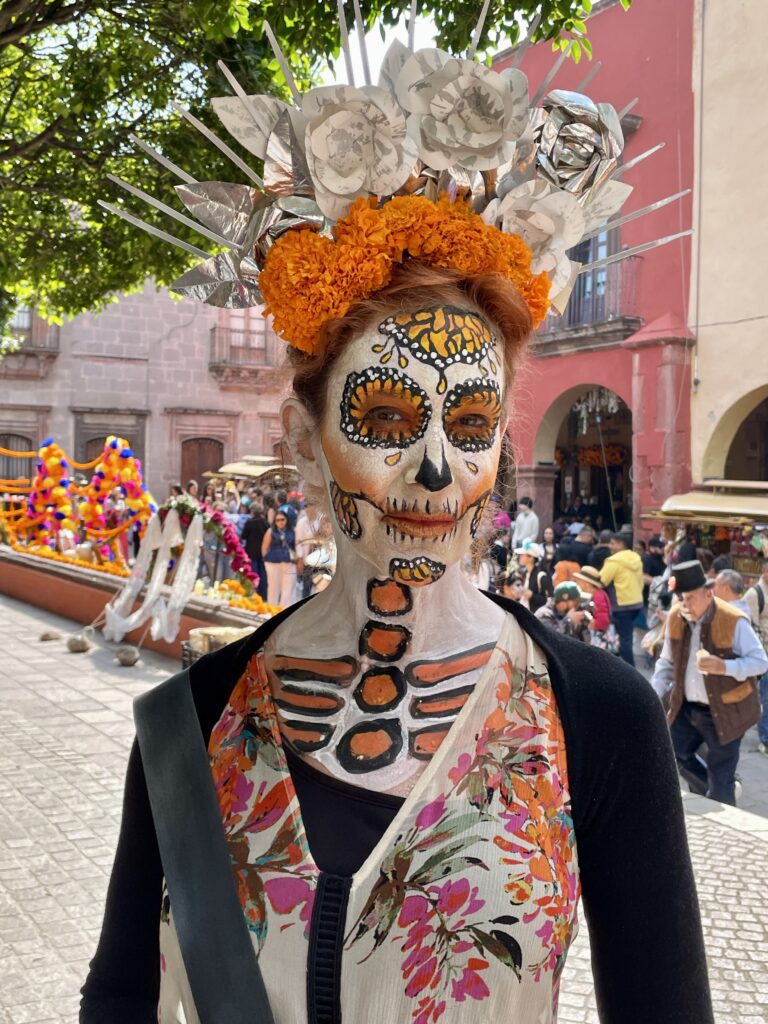
Painting yourself as a Catrina is a huge fashion statement during the festival. So much so, that San Miguel de Allende had a night-time parade of Catrinas with thousands of them- men and women, parading through the streets. The artistic makeup and beautiful clothes were all so impressive!





Ofrendas (Offerings or Altars)
For me, the most impressive symbolism and decorations for the holiday centered around the ofrendas, or altars, created to honor the dead. These could be small, set in a doorway of a home. I would often spot a medium sized ofrenda peeking out from a side street, the entryway of a church, or the lobby of a hotel or restaurant. Some had photos of specific loved ones, or community members, others had paper and pens next to the altar so that anyone passing by could add the names of their own loved ones. Altars were everywhere and for several days leading up to the holiday, they were getting erected with love all over town.
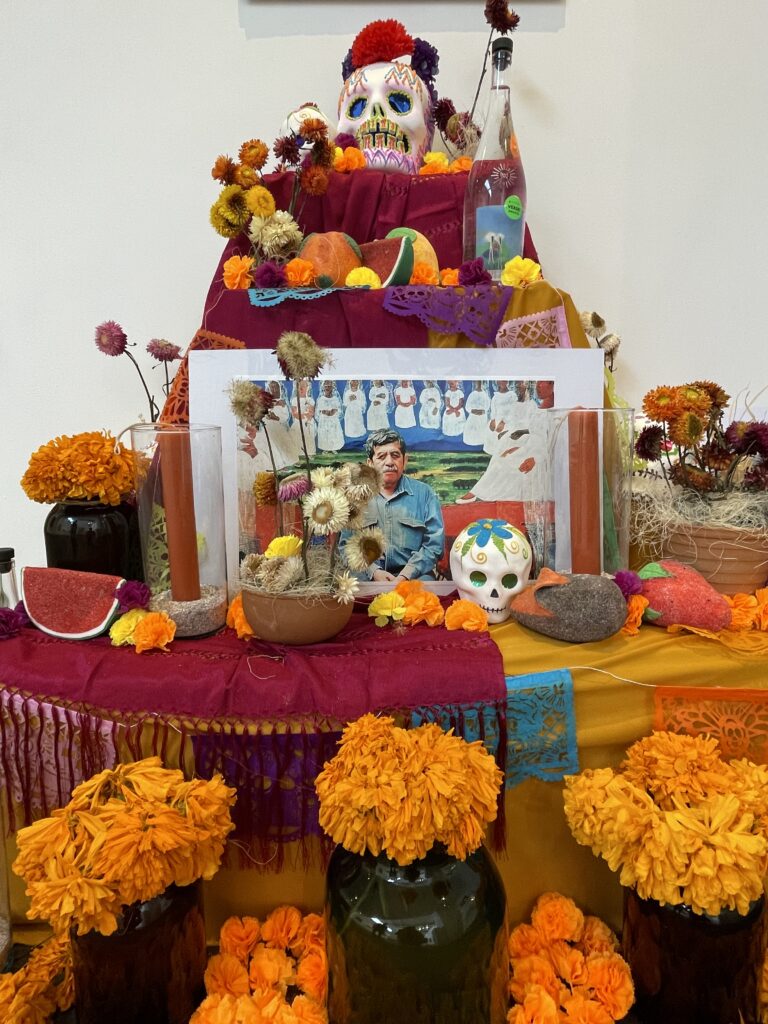

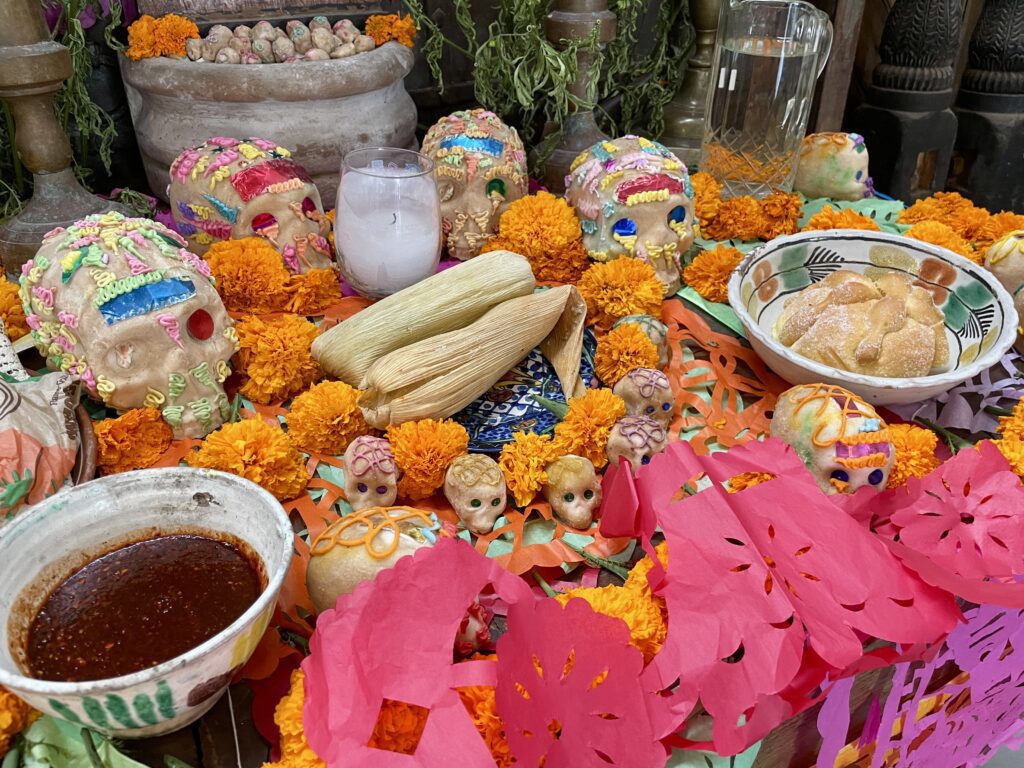
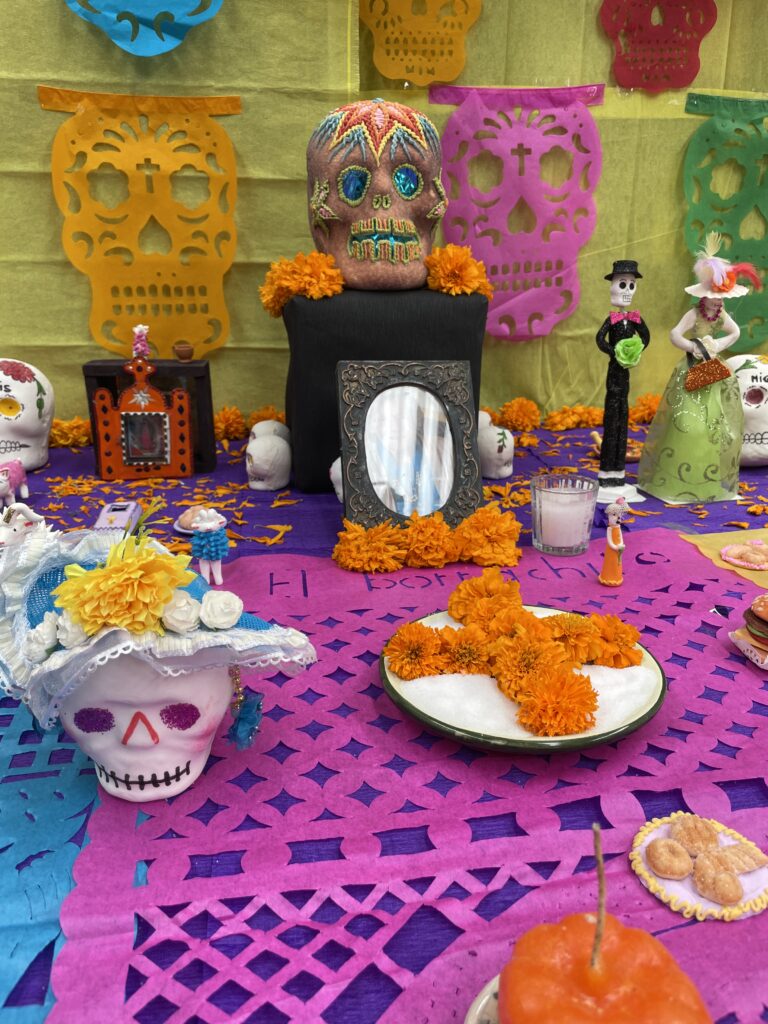
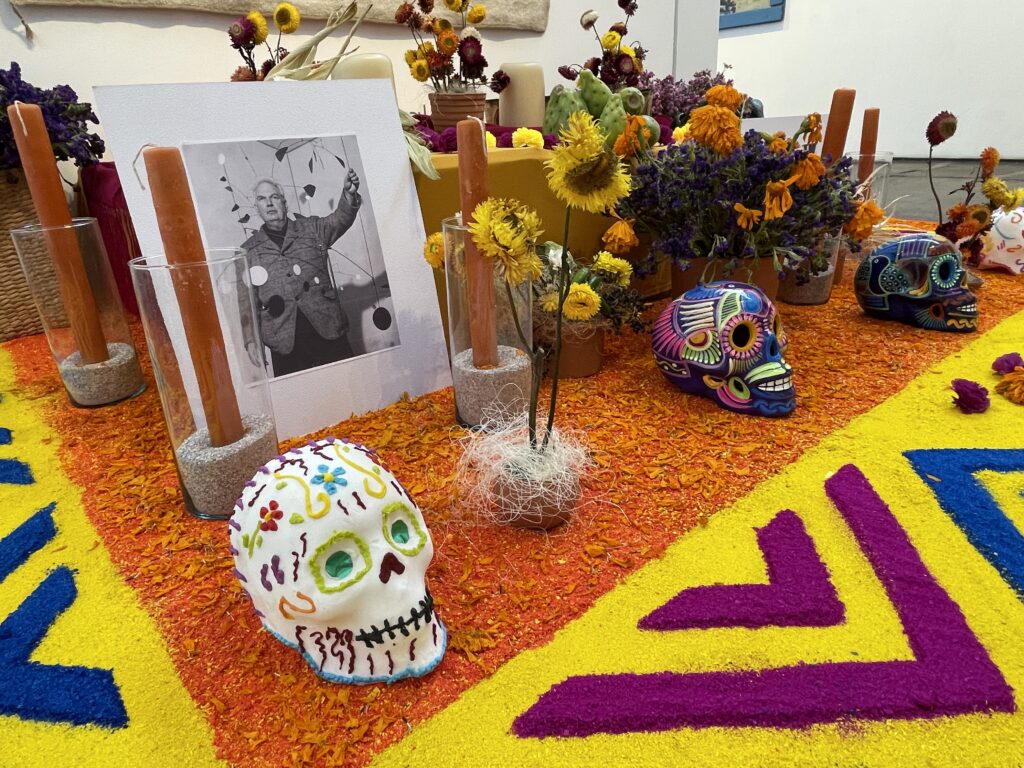
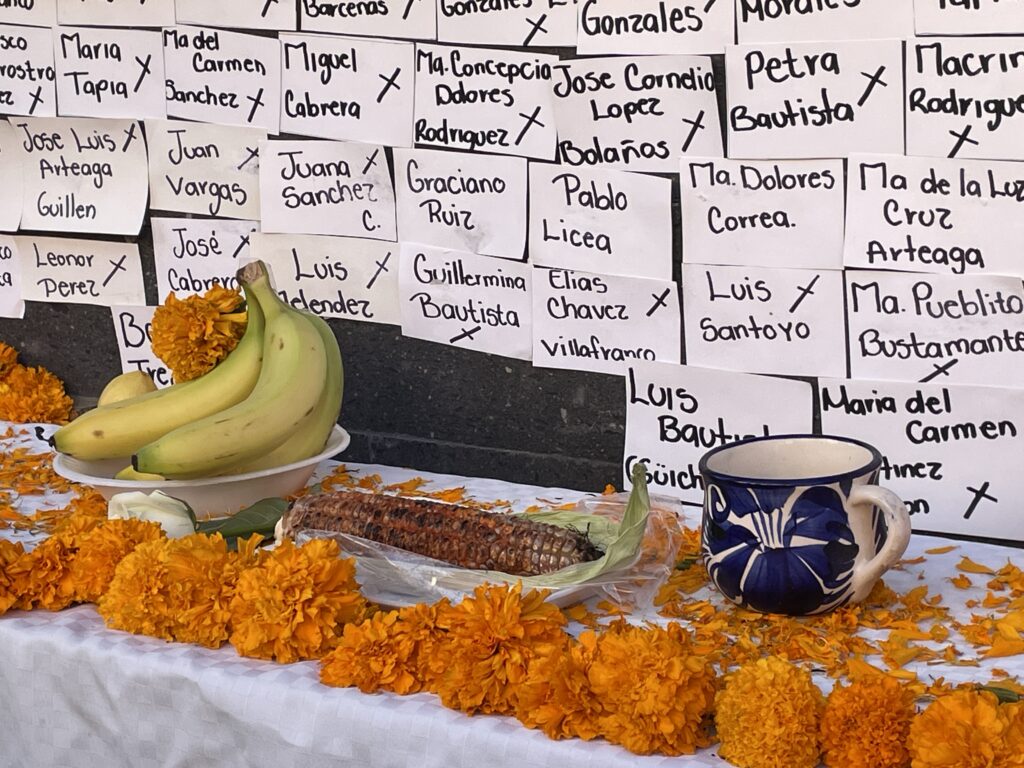

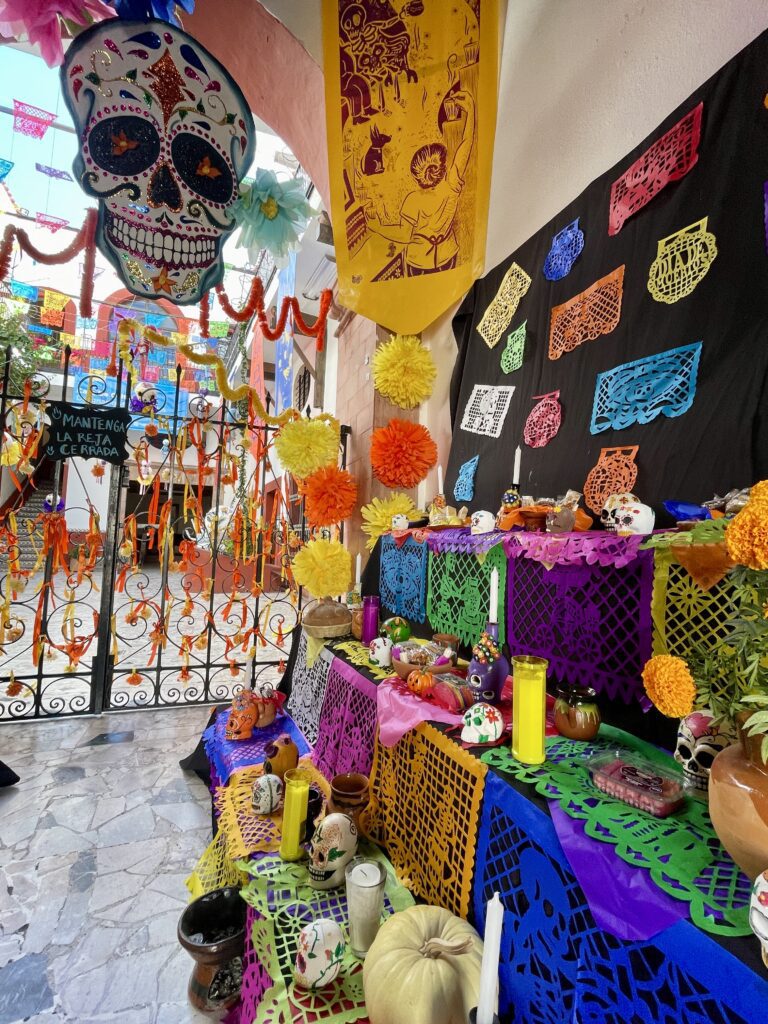
Notice that these altars often contain four elements: fire (in the form of candles), water (often in a vessel), earth (represented by the natural flowers and the tapete de aserrín (sawdust, salt, corn and bean paintings), and wind (represented by the papel picado and butterflies). I marveled at all the artistic and thoughtful creations.
In addition to photographs of loved ones, the creators included favorite foods, beverages, and vices for the deceased to enjoy again. Sometimes, the real food was placed on the altar. For example, I saw elote (corn on the cob), calabazas (squash) and of course a bottle of tequila or beer graced many altars, too. However, it was more common to decorate the altars with small figurines which could be bought at a local market. These small models of all the foods and vices loved in life are called alfeñiques, and are created entirely from sugar and frosted by talented artists. There were so many booths in the streets selling these little creations, I had to buy one to test its edibleness. Hard as a rock, but definitely all made of sugar!




In addition to the small, personal ofrendas, large mantels were erected in parks, plazas and other public spaces for everyone to enjoy. The most amazingly part of all was that many of these were built and torn down in the same day!
Check out the images below. Can you find the motorcycle enthusiast? The deceased community members of the Rotary Club? The fallen heroes of the Police Department? And, the favorite pets of the local Humane Society?
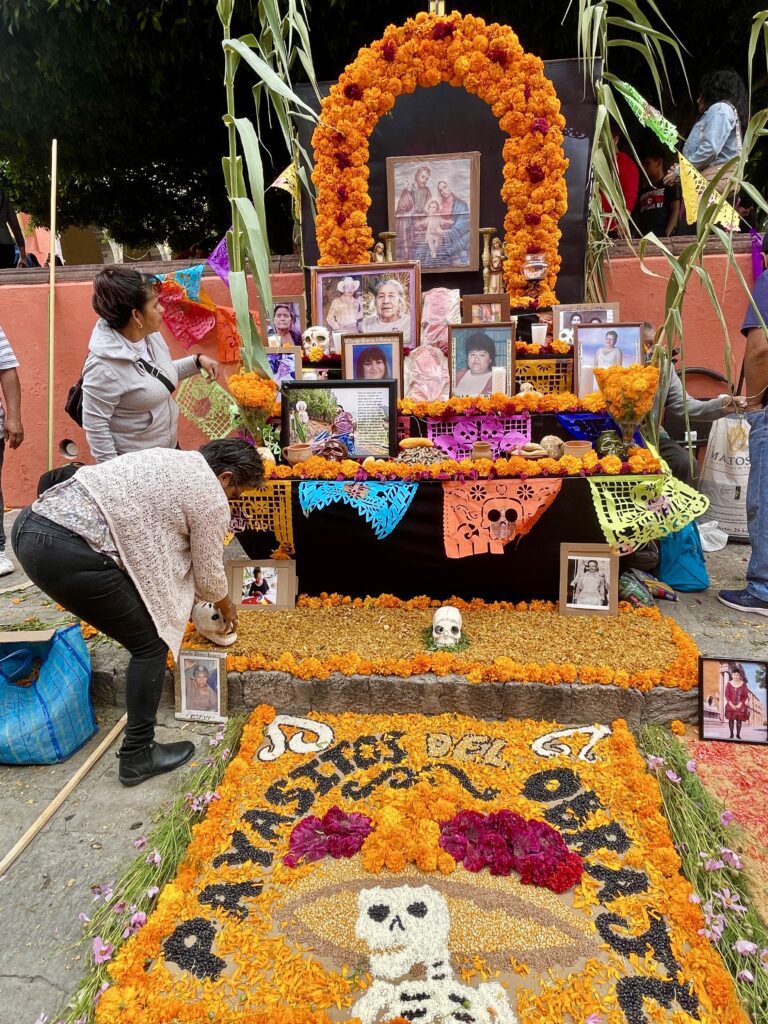
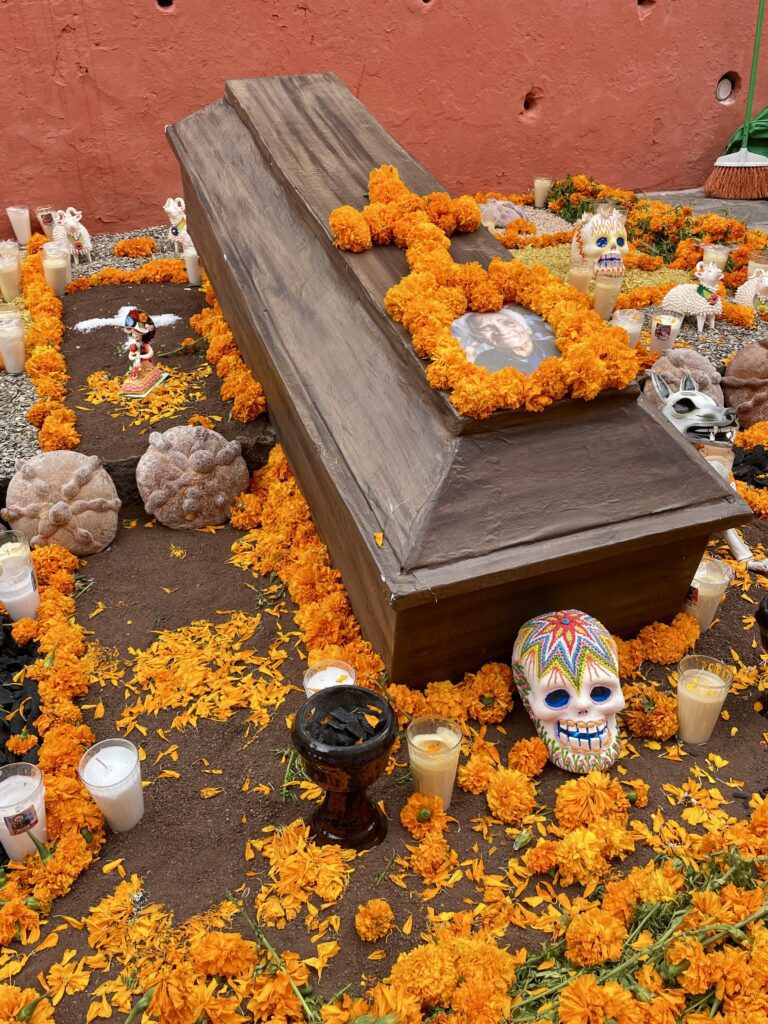
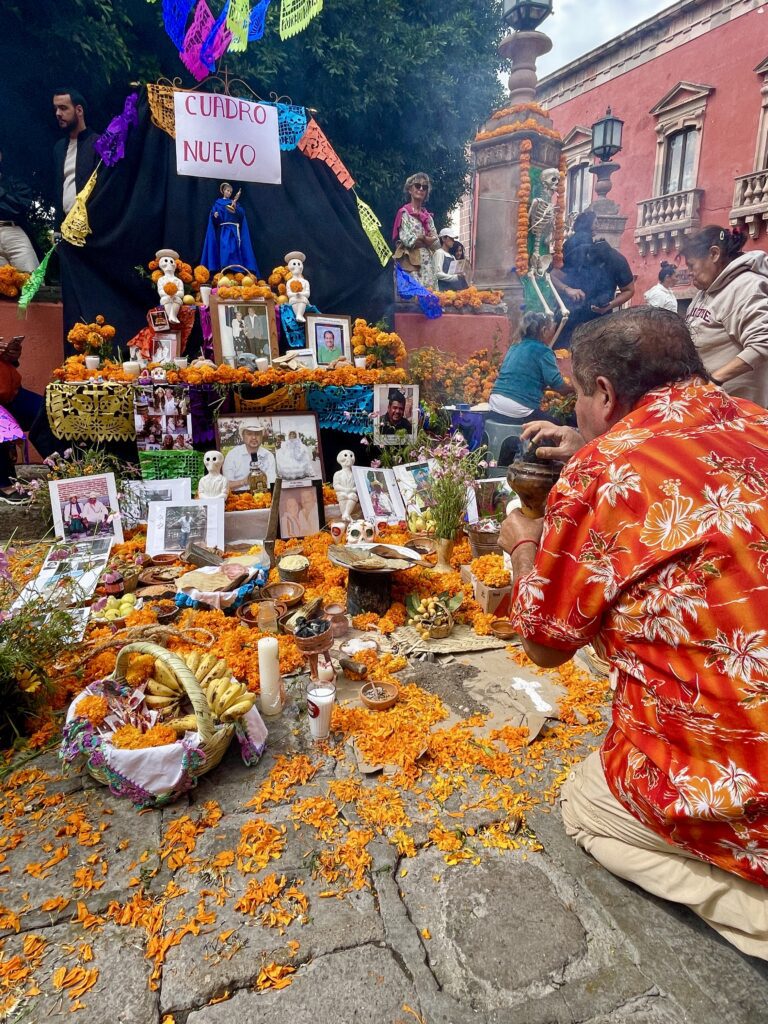
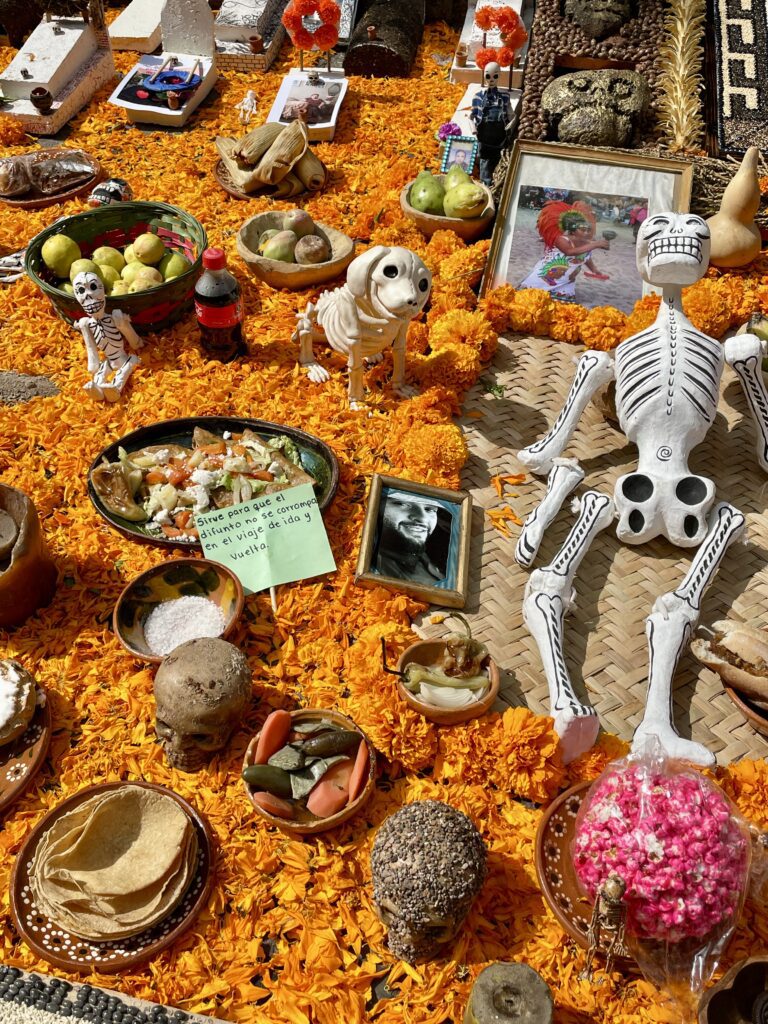
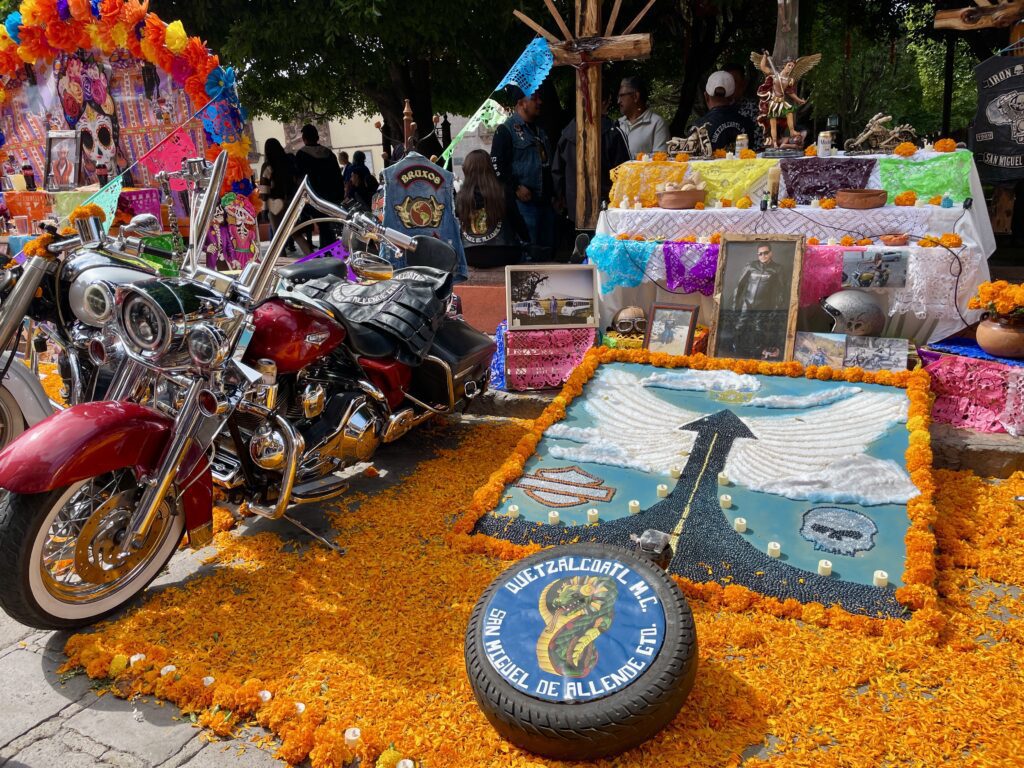


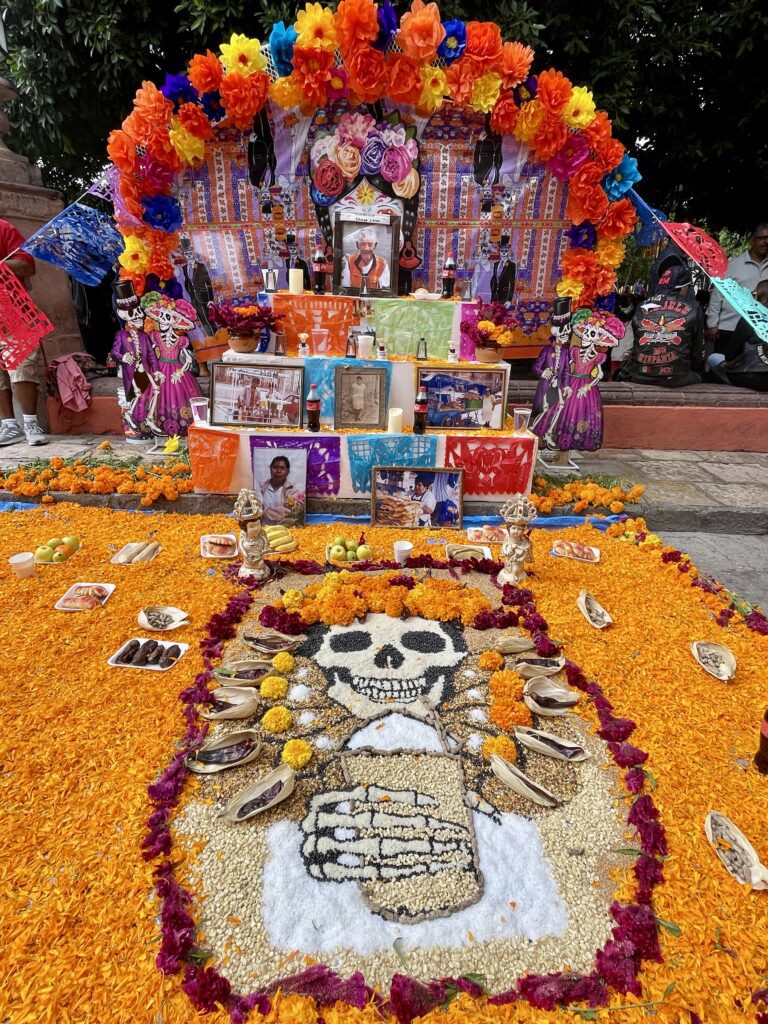
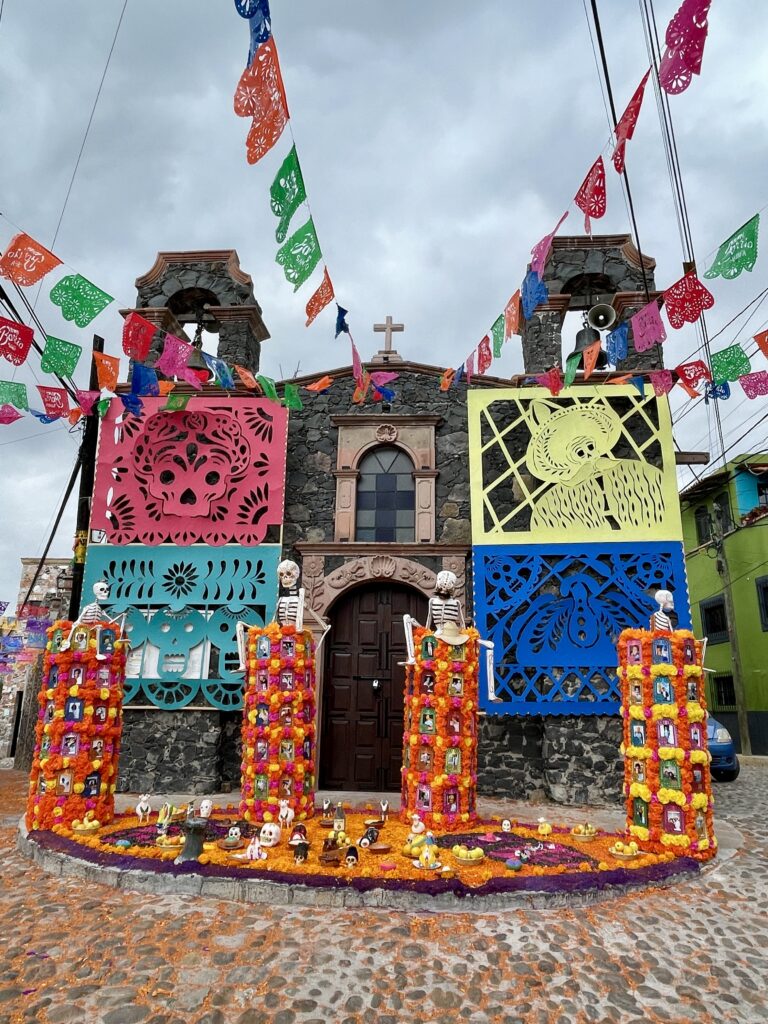
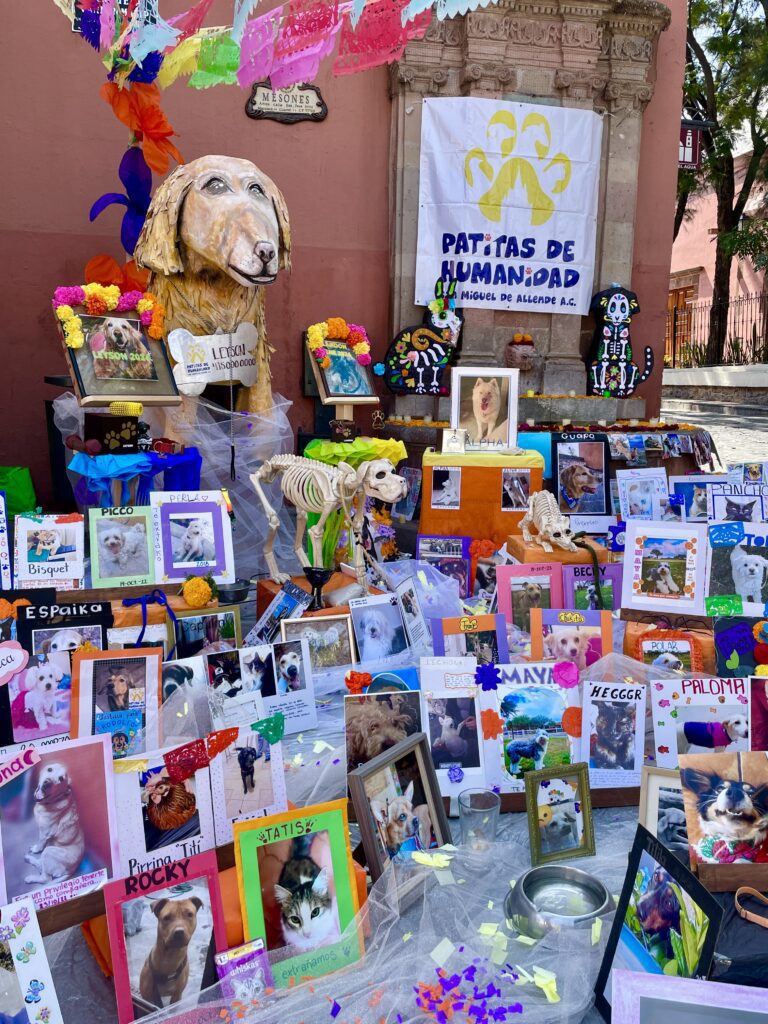
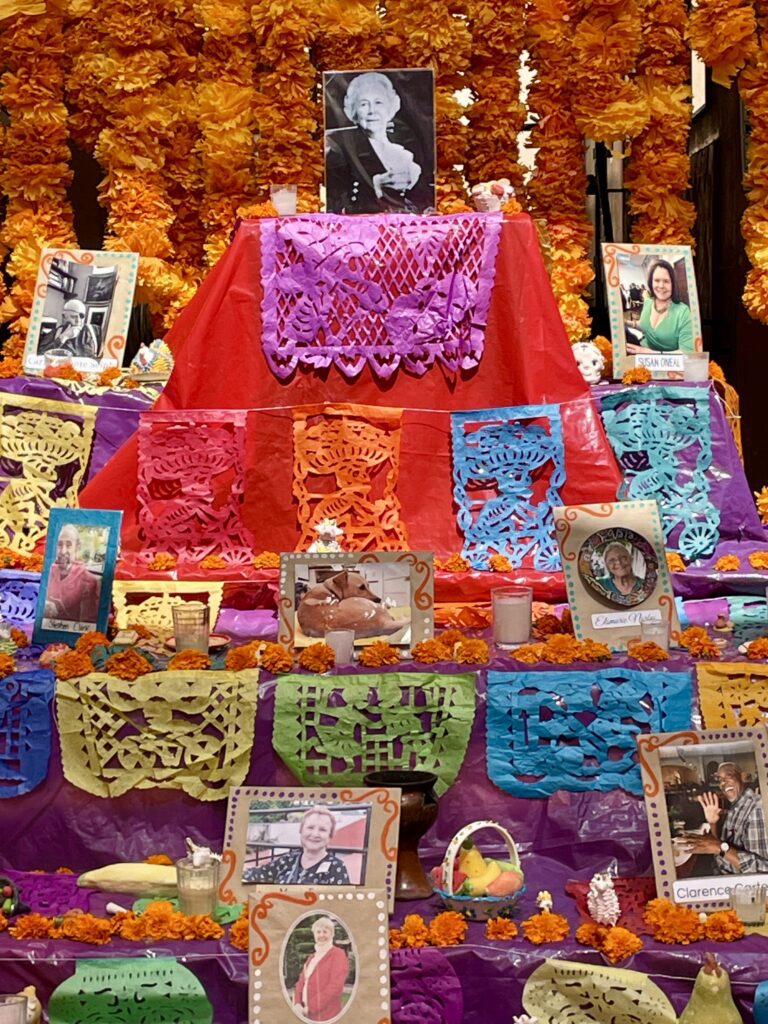
All of these altars were so creative and thoughtful with the deceased in mind. For me, however, the most impressive altar was set in a government building of Querétaro. This altar took over the entire lobby and had hundreds of photos representing the deceased of the families who worked there. It was a very moving and emotional tribute to their ancestors.






While I wandered and observed all the public festivities for several days, I also knew that this holiday was a private experience for family in their homes. Behind closed doors, I could only imagine their impressive altars and decorations. The other place I considered a little personal was the cemetery. I didn’t feel comfortable gawking as the families gathered around the grave stones. But on November 3rd, when all the large altars had been swept away in the streets, I headed for the cemetery to get a glimpse of the previous night’s celebrations. The decorations did not disappoint. The floral arrangements were stunning!







Visiting México during El Diá de Los Muertos was an amazing experience. I really love how this culture openly celebrates their loved ones in a thoughtful and spirited way. In honor of this culture and this celebration, we re-watched the movie Coco. After seeing all of the artistry and symbolism first hand, I appreciated the details of the movie so much more. From what I could see, this movie is a very accurate love story to México. The locals must think so too, because they projected it live in the plazas for everyone to enjoy.
Thank you to my wonderful friend and host, Scott. Scott resides in México full-time and we share a love of wandering colonial streets, sipping cocktails on rooftops and noshing on anything in a tortilla. We always have a great time together in our travels!





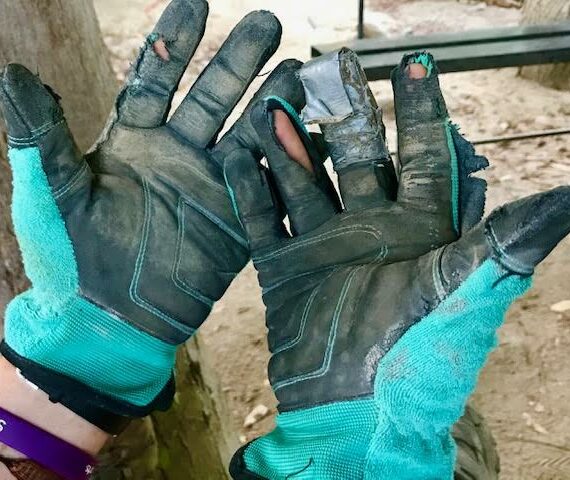
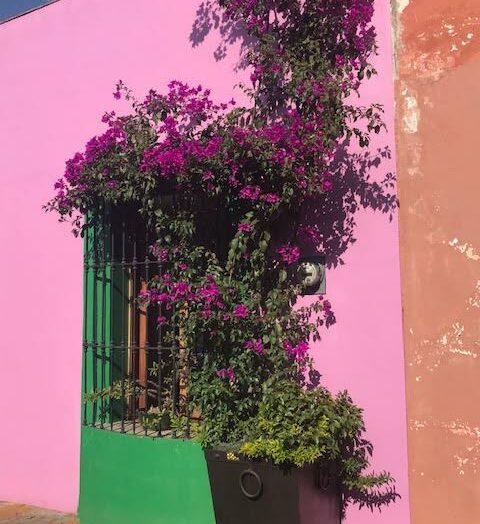
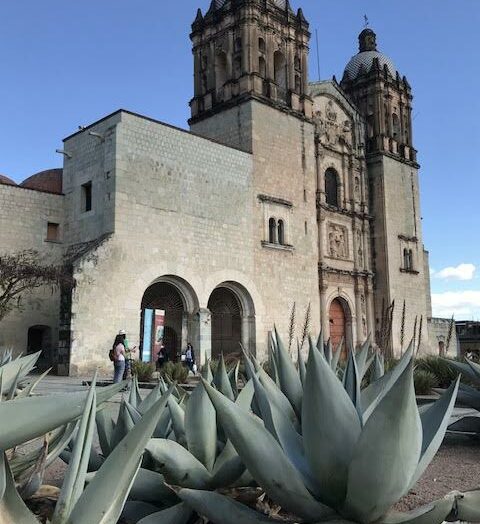
andrea scharf
Wow, Becky!!! Finally you have visited a place (and a celebration) that i know and love. I was in San Miguel for Dia de los muertos. This is where i met my Spanish teacher who i’ve been working with for about six years. I also visited Guanajuato a couple of years ago (but not for Dia de los muertos.) Your photos are terrific and brought back lots of memories. Muchas gracias!